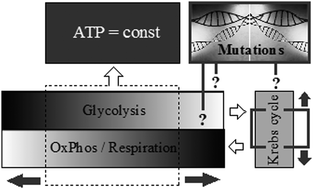Comparative bioenergetic assessment of transformed cells using a cell energy budget platform†
Abstract
The aberrant expression and functional activity of

* Corresponding authors
a
Biochemistry Department, University College Cork, Cavanagh Pharmacy Building, College Road, Cork, Ireland
E-mail:
d.papkovsky@ucc.ie
Fax: +353-21-490-1698
Tel: +353-21-490-1698
b Henry Wellcome Building for Molecular Physiology, University of Oxford, Oxford OX3 7BN, UK
The aberrant expression and functional activity of

 Please wait while we load your content...
Something went wrong. Try again?
Please wait while we load your content...
Something went wrong. Try again?
 Fetching data from CrossRef.
Fetching data from CrossRef.
This may take some time to load.
Loading related content
